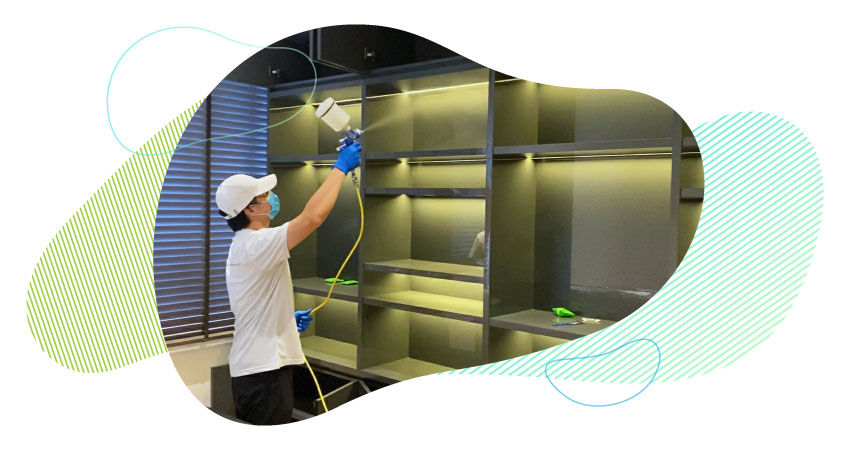How Formaldehyde Removal Boosts Indoor Air Quality in Singapore Homes?
- UC Fresh Air
- Sep 23
- 4 min read
Indoor air isn't always as clean as it feels. Invisible pollutants can build up in homes, especially after renovations or when new furniture arrives. One of the most common offenders is formaldehyde, a chemical that often hides in plywood, paints, and adhesives. Professional services for formaldehyde removal in Singapore are becoming increasingly popular, as untreated exposure can irritate the eyes and throat. In high concentrations, it may lead to more serious health concerns.
This is where formaldehyde removal specialists in Singapore come in. Professional treatment targets the chemical at its source, helping residents breathe easier. For homeowners wondering why this matters, let's break it down step by step: who needs it, what it involves, and how it can make a home healthier.
Who's Most Affected by Indoor Formaldehyde?
Formaldehyde exposure can affect anyone, but some groups feel the impact more quickly.
Young children and infants have smaller bodies, which absorb pollutants faster.
Elderly residents' age can make them more sensitive to irritants.
People with allergies or asthma may experience worsened respiratory symptoms from formaldehyde.
Those living in freshly renovated spaces, with new cabinets, flooring, and paint, often release the highest levels of VOCs.
In Singapore, where compact homes often have limited ventilation, indoor air quality can quickly suffer. Professional formaldehyde removal ensures these vulnerable groups are protected from prolonged exposure.
What Exactly Is Formaldehyde and Why Is It Indoors?
Formaldehyde is a colourless gas, part of a broader group of chemicals called volatile organic compounds (VOCs). It's commonly released from building materials and household products, such as:
Pressed-wood furniture like MDF or particleboard
Glues and adhesives used in carpentry
Wrinkle-resistant fabrics
Paints, varnishes, and wall finishes
Certain insulation materials
Even after renovation work is complete, slow "off-gassing" can continue for months. This is why formaldehyde removal treatments in Singapore are often recommended after major home upgrades. They help bring levels back within safe limits so occupants aren't unknowingly breathing contaminated air.
When Should a Homeowner Take Action?
The best time to schedule professional testing is right after a renovation or when moving into a newly furnished property. This is when VOC levels tend to spike. But action may also be needed if symptoms like these appear:
Unexplained eye, nose, or throat irritation
Headaches or fatigue that ease when leaving the house
A noticeable "chemical smell" that lingers
Rather than waiting for symptoms to worsen, a proactive approach to indoor air quality keeps spaces safe and comfortable. Companies like UC Fresh Air often recommend retesting after treatment to confirm that formaldehyde levels have dropped.
Where Does Professional Treatment Make the Biggest Difference?
Formaldehyde isn't limited to homes. Offices, clinics, and classrooms can have elevated levels, too, especially after renovation. In Singapore's dense urban setting, natural airflow is often limited, trapping VOCs indoors.
Professional formaldehyde removal is most effective in:
Newly built condominiums before move-in
Commercial spaces that receive regular refurbishments
Clinics and childcare centres where air safety is critical
Small offices where employees spend hours in the same room
By targeting the most affected areas, walls, furniture, and flooring, experts restore balance to the air and reduce health risks for everyone who spends time there.
Why Formaldehyde Removal Is More Than Just Cleaning
It's tempting to assume that opening windows is enough to solve the problem. But Singapore's humid climate often keeps homes closed, and simple ventilation may not fully clear harmful compounds.
UC Fresh Air uses a multi-step process that goes beyond surface cleaning:
Identifying major VOC sources
Measuring formaldehyde and TVOC levels
Applying neutralising agents and coatings
Using targeted sprays and ventilation methods
Showing measurable improvement
This science-backed process helps ensure that the reduction isn't temporary. It addresses both current pollutants and future off-gassing.
How Treatment Improves Day-to-Day Living
When formaldehyde removal services in Singapore are completed, the results are often noticeable within days. Residents report fewer allergic reactions, better sleep, and fresher-smelling rooms.
The benefits extend beyond comfort:
Reduced risk of long-term respiratory issues
Better concentration and productivity in work-from-home setups
A safer space for pets and children
Peace of mind knowing hidden toxins are under control
Clean air isn't a luxury; it's a basic requirement for well-being. That's why more Singaporean homeowners are investing in professional solutions for indoor air quality management.
In a Nutshell
Formaldehyde is a hidden threat, but it doesn't have to stay that way. With professional formaldehyde removal, Singapore homes can maintain safe and healthy air even after renovations or new furniture installations. The key is acting early, testing, treating, and verifying improvements. In a city where most people spend a majority of their time indoors, prioritising indoor air quality isn't just about comfort; it's about long-term health.
Cleaner air supports better sleep, clearer thinking, and fewer allergy flare-ups. For those ready to make a change, the next step is simple: schedule an air quality assessment and take control of what's circulating at home. UC Fresh Air has shown through countless projects that tailored treatment plans can transform everyday living spaces into safe, breathable environments.
.png)




.png)



Comments